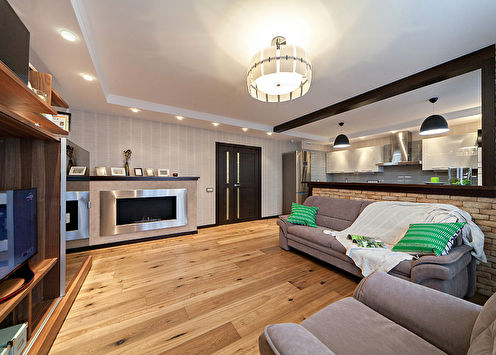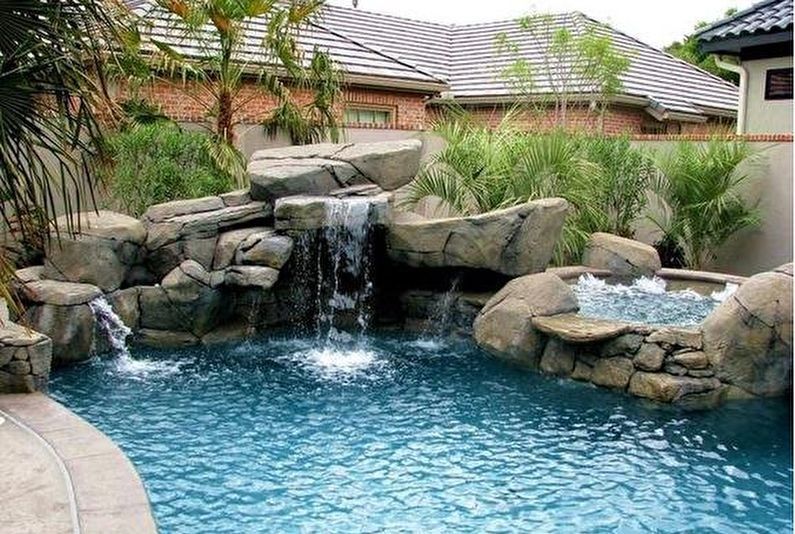
Most people are able to appreciate the beauty of nature. Therefore, the owners of land allotments as far as possible want to decorate their habitat. There is an ancient, now revived way to do this - to create a rockery, or a rocky garden.
Rockery - a composition of stones and plants. The participation of a water body enhances visual impact.
Benefits of the rockery:
- You can choose a low-cost option;
- little weeding; changing or replanting plants is enough 1 time in 3-4 years;
- It looks unusually spectacular;
- can be in the territory of a summer cottage not only a decorative, but also a functional element.
Possible practical role of a stone garden
- limit the amount of water in a pond, stream, fountain, pool;
- accompany footpaths;
- divide the estate into zones;
- maintain the terraces.
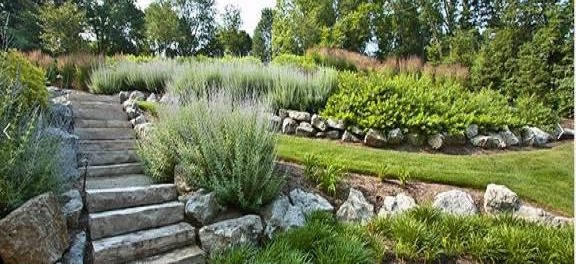
Depending on the purpose of the rocky garden, such characteristics as materials, location and cost are determined.
In the construction of such a landscape ensemble, the stones that you have chosen play an important role. The emphasis in the composition falls on the largest boulder. In extreme cases, it can be replaced with 2-3 smaller stones, preferably the original form.
The following types of stone are used to equip the rockery:
- Granite. It is a strong mineral that is widely used in mining sites in construction. It has shades of gray, black and pink.
- Limestone. Almost white in itself. Organics, clay, sand and other impurities often make it colored. It has a diverse structure and shape.
- Basalt. Basic black or gray colors have many small foreign inclusions.
Stones are transformed into a rockery and are perfectly combined with various types of living vegetation.
There are several main types:
- Dwarf coniferous plants. For example: Canadian and Serbian spruce, varieties of spruce and ordinary spruce; varieties of thuja, pine and juniper.
- Undersized shrubs. Example: cinquefoil, boxwood, honeysuckle, barberry, cotoneaster.
- Perennial flowers. It is better to select plants that reproduce vegetatively (primrose, hosts). If bulbs (crocuses, primroses, tulips, daffodils) are planted, you must not forget that their period of active life ends in May. Therefore, annuals will have to be planted on top, not forgetting to cut the testes from them to prevent self-sowing.
- Ground cover (carpet). Moss, lichens, stonecrop, veronica, stingray will create neat islands of greenery, blue, yellowness and other mono-and-motley colors. So that the color of your favorite plants is not lost against the background of multi-colored stones, you need to think in advance not only the location of the solid material, but also its color. The easiest way to use solid stones and not be afraid to experiment. And with colored small stones poured into place, it is possible to achieve an even better result.
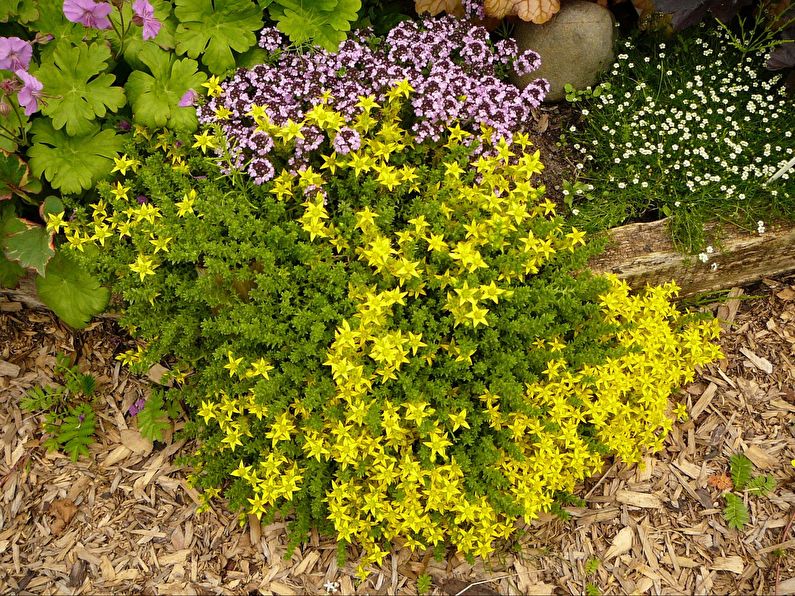
The main condition for the appropriateness of a rock garden is that the entire plot should be well maintained. Then the rockery in the landscape design of the estate will take its rightful place.
Stages of the construction of the rockery
The formation of rockeries requires significant physical costs. Using huge boulders may require someone else's help or even equipment. It is recommended to draw up an action plan in order not to make unnecessary gestures and not to redo anything.
- Clearing the site. The fertile layer is removed by at least 20 cm. If the rhizomes of perennial weeds are carefully selected, then this soil can later be used for planting plants.
- Installation of the largest stone on a concrete base.It should not burrow into the ground over time. Sprinkle this boulder to 2/3 of the size, putting on display the most profitable side. In order to prevent injuries and drift due to washing by rain, the stability of the block is carefully checked. If there are large stones of smaller sizes, they are also immediately buried.
- Bookmark the soil under the plants. The drainage layer falls asleep. Above is peeled land or compost mixed with soil and sand. The mixture should not be too fertile to avoid the rapid growth of greens. For the same purpose, do not particularly zealous with watering.
- Soil shrinkage. Wait 2 weeks, watering the ground every day.
- Landing. It is recommended to plant conifers so that the rockery enlivens the landscape year-round. Estimate how in reality the selected plants will be better combined conveniently, exposing them in pots in different variations. When the optimal result is achieved, everything lands. Ground cover plants make it possible to easily eliminate the disadvantages of the composition.
- The finish. At the end of the process, open ground is covered with larger stones and pebbles. Fine gravel is scattered on top or laid out as an advantageous background for individual plants. There is one rule: a larger plant - larger stones around.
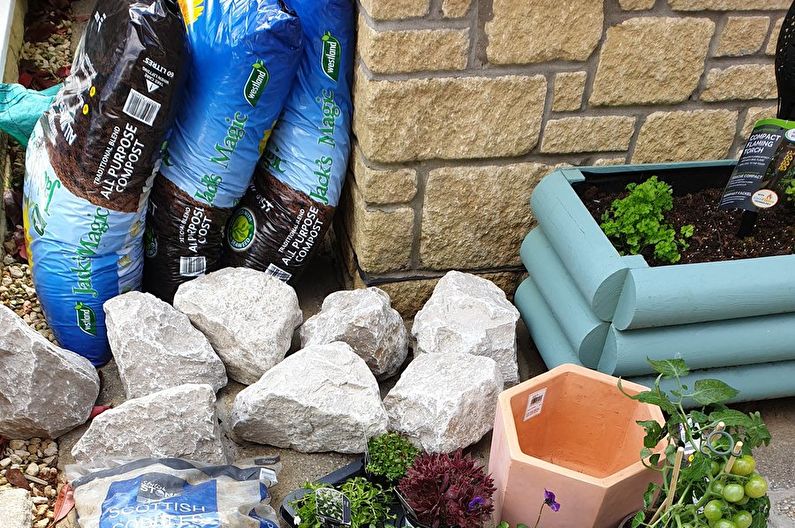
Features of caring for a stone garden
Plants need to weed 1 time per week. Water as necessary with a watering can with a fine grate or a spray hose to avoid leaching the soil. Fertilize no more than 1 time per year with complex fertilizers.
The efforts to break up the rockery will result in the presence of a cozy corner at home, which in the future will require minimal effort from the owners to maintain an attractive appearance and will become a means of psychological relaxation. Perhaps beauty will really save the world!

